A guide to vintage in Japan: Harajuku, Koenji, Osaka
There are more vintage shops in Japan than anywhere else. Particularly in Harajuku, the fashion area of Tokyo, and in Koenji, a district about 40 minutes from the centre.
But elsewhere too - Osaka, traditionally a fashion centre in Japan, has high-end places like Acorn as well as scores of modern pre-owned shops. And even somewhere small like Kobe around the bay has better vintage than London.
Vintage has become so popular that it’s increasingly specialised. In Ginza, the posh area of Tokyo, there are multiple shops selling pre-owned handbags, one of the most impressive being Allu, which has five floors of Hermes and Chanel. In Harajuku, the Berbejin group opened a new store just to cater to the nineties fashion of authentic band T-shirts and black Levi’s.
People buy vintage for lots of reasons and they don’t necessarily overlap. These include price, access, historical significance, uniqueness, quality and character. The good thing is that in Japan you feel each segment is catered for; it’s a knowledgeable market, so finding an absolute bargain isn’t easy, but what you want will be there somewhere.
Below are the three areas we focused on during our visit - Harajuku, Koenji and Osaka - with the favourite shops in each, plus some observations along the way.
HARAJUKU
In Harajuku the vintage is mixed in among big brands and teen fashions, which is slightly confusing, particularly given the neighbourhood’s hectic pedestrianised streets.
Some like Berbejin are well known, others like Jumble less so, but it’s worth persisting - each often has a speciality, whether it’s military dead stock or grungier styles running from 1940s leathers to 1990s metal.
I should say that we owe a debt to Ethan Newton who showed us round some of his favourites. It turns out Ethan doesn’t just have a great eye, but is a great personal shopper too - some of the best things Alex [Natt, photographer] and I bought were his suggestions.
Berbejin - One of the best known, and usually busy. A range of Americana, military and sporting clothing, but a good, fairly high-end selection. The military stuff is at the back, the rare denim downstairs.
Fake Alpha - Part of the same group, but with more of a focus on older Americana and denim. Plus some deadstock on the right-hand side.
2nd Street by Jumble Store - 2nd Street is a chain of second-hand shops, most of which are more fashion-orientated and modern. But the downstairs of the Harajuku branch is really good, with nice pieces reasonably priced: I picked up a pale-pink rayon jacket for £90. As elsewhere, the most expensive and rarest pieces are the ones hanging from the ceiling.
Pigsty - Also a chain, and the one we went to in Osaka wasn’t great. But this one, in Harajuku, was better. Like Jumble, it’s slightly cheaper than the likes of Berbejin but with some nice pieces. I got an old faded yellow Harrington for about £65 (though bear in mind the exchange rate is good right now.)
Banana Boat - Good for dead stock: vintage clothing that has never been worn. There is some other vintage too, but it’s mostly high-end. The fact everything is in plastic wrapping (like a comic-book store) is a dead giveaway.
Laboratory - Good for band T-shirts, and quite a grungy selection overall - modern upstairs, older downstairs (as is often the way). A little cheaper than Berbejin and its kin, but the product isn’t as pristine either.
Vostok - I found some really good things last time I was here, back in 2019, but there was less this time around. There were some good Levi’s, though as with most categories that have become uber-popular, they were very expensive - £700 and over.
KOENJI
Koenji feels like a real Japanese neighbourhood - less prosperous, with the only tourists here for vintage (though even they don’t usually make the journey). More like a place for the purists.
Most of the shops are scattered around the area to the south of the train station, in the covered shopping area and the streets around. Though a surprising number, like Whistler, are also three or four streets away, almost as if they want to be hard to find.
There’s so much vintage here - particularly somewhere like Whistler - that it’s worth reminding yourself in advance what you’re there for. Personally I find it helpful to have a small hit list of (for me, 40s US chinos, a rayon jacket, some interesting sunglasses) and use that to focus, but also be open to inspiration, browsing and flicking and generally staying open-minded. As I’ve written before, I often find that the most enjoyable aspect of vintage.
Safari - Safari is the best known of the vintage shops in Koenji, but is actually six shops, each with different specialities:
- Safari 1, the best and what most people would call vintage
- Safari 2, more modern American, Ralph Lauren etc
- Safari 3, European classic menswear and tailoring
- Safari 4, contemporary, trainers and outdoor/hiking clothing
- Safari 5, European and designer labels
- And Safari Gallery, antiques, furniture and art
Whistler - A little bit of a walk away, Whistler specialises in American clothing and has an amazing range of footwear. As one shoemaker put it, he could learn the entire history of American footwear by browsing those shelves; Alex bought a great pair of unbranded demi-boot moccasins. Make sure you go upstairs too (separate entrance): that’s where I found my 40s chinos.
Trunk - Mostly European, real vintage to modern, so hunting jackets mixed in with Hermes leather. A really nice curation.
Suntrap - Quite high-end, with some new clothing alongside vintage Americana. Unusually, they have an online shop too.
Big Time - A chain, with branches around Japan. As their online shop shows, it’s also quite contemporary in most places, but the Koenji branch is more vintage and typical of places on the main strip here: large, rambling but worth sorting through.
Small Change - Similar to Big Time: men’s and women’s, a little patchy, but also cheaper and with a big range.
Oh and if you go to Koenji then do pop into Terry Ellis’ shop, Mogi, which mixes new and old clothing with folk art. Feature on that coming separately.
OSAKA and KOBE
Shopping in Osaka opened my eyes to how big pre-owned clothing is in Japan. In some areas there were almost nothing but second-hand shops, and there was one entire alleyway with tiny specialist places.
The way younger people wore vintage, too, was inspiring - mixing strange militaria with noughties designer labels for example. It brought home how much second-hand clothing allows people to express themselves, because there are so many eras and styles.
However, the vast majority of shops in Osaka sell what some call ‘new era’ vintage - broadly from the 1980s onwards. It’s mostly for style and uniqueness, rather than quality or significance, and while really interesting, it won’t be what most readers are after. What we list here are the exceptions.
Acorn - Simply the most high-end, curated vintage shop I’ve ever been to. Not a large number of pieces on display - perhaps 200 - but the most sought-after versions of everything. Three M65s, in three different sizes, all perfectly faded; five pairs of big-E Levi’s in unusually wearable sizes and condition; ditto three French moleskin workwear jackets; ditto sun-faded hoodies; and so on.
Nats - The opposite, almost. Across the street from Acorn, a huge place with thousands of items in the back (above). This still isn’t thrift, but the range is so much larger (in style, in condition, in price) and rewarded going through rack after rack.
JAM - One of the new-era places, but that does mean it’s cheap and there’s a big selection. If you’re interested in more modern pieces (made-in-America Carhartts for example) it’s worth a look.
Magnets - Kobe and Osaka are essentially one city, as the industry is so spread along the coast, but the streets of Kobe have a different, more seaside feel. This little vintage shop is run by an ex-McCoys employee and is really nice; not worth travelling for, but certainly popping into if you’re in Kobe.
Junk Shop - A charming shop in Kobe, with multiple levels. The mid-level has an interesting mix of eras of outdoors clothing, nicely presented and curated. It feels like a regular outdoors shop until you notice most things are vintage. The top floor has a wider range - none of it pre-1960s, but again a good selection.
As to what I bought, apart from the two jackets and chinos mentioned, there were two pairs of jeans - one 90s and cheap, one 60s and expensive - a pair of Ray-Ban aviators and a forties suede jacket. The latter was from Safari and will need some repair work, but that meant it was half the price. And I know Cromford will be able to do it.
I’m sure all will appear on PS at some point, and we can talk then about the ins and outs of them.
In the meantime if anyone has any questions about this list - I’ve had dozens of messages already from people wanting tips - please just let me know in the comments below.
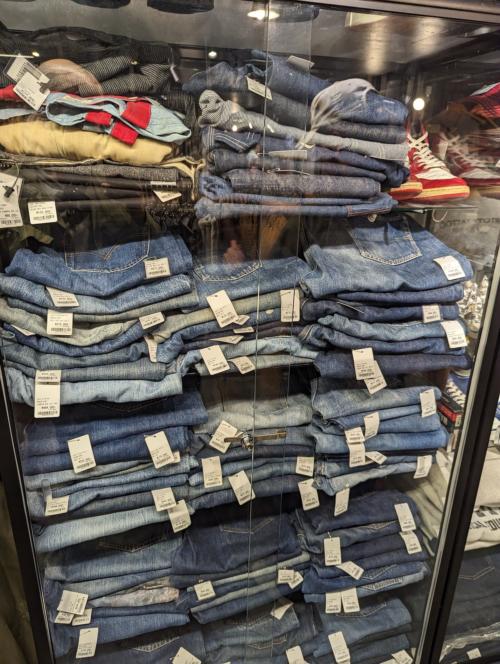
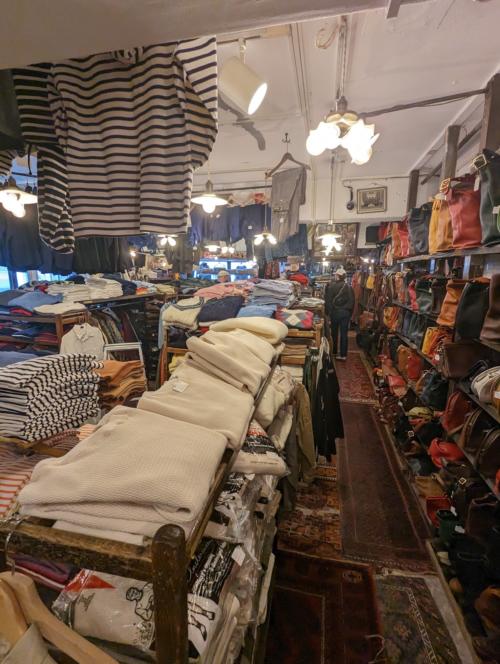
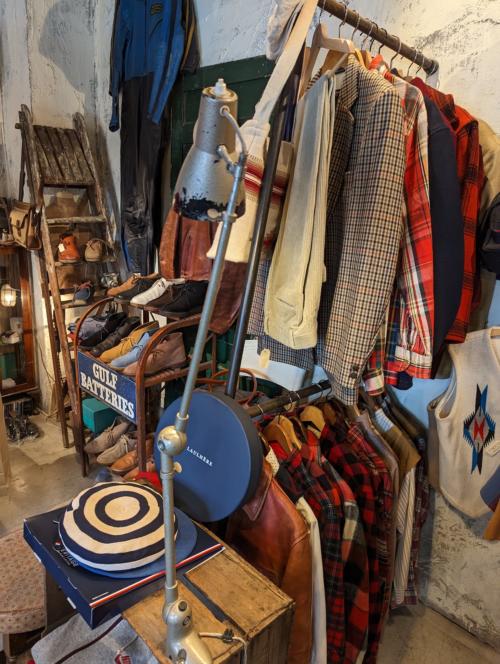
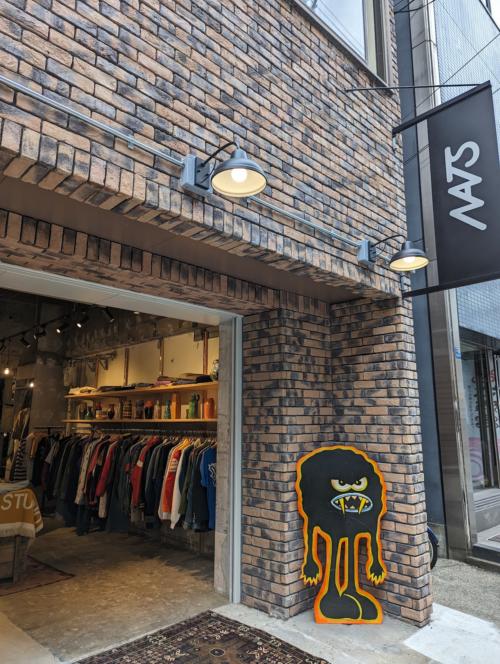
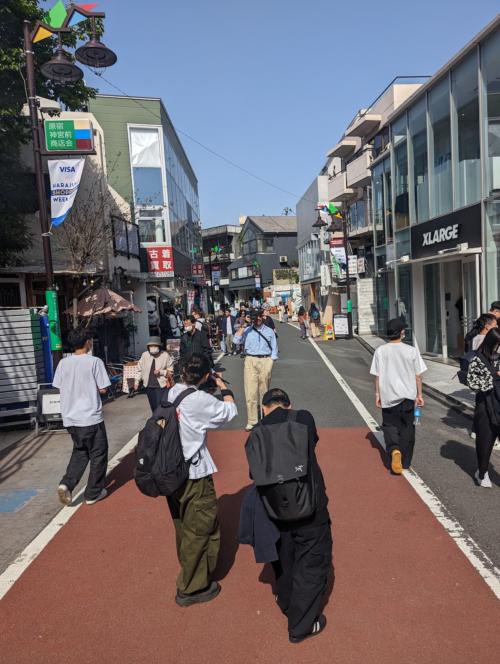


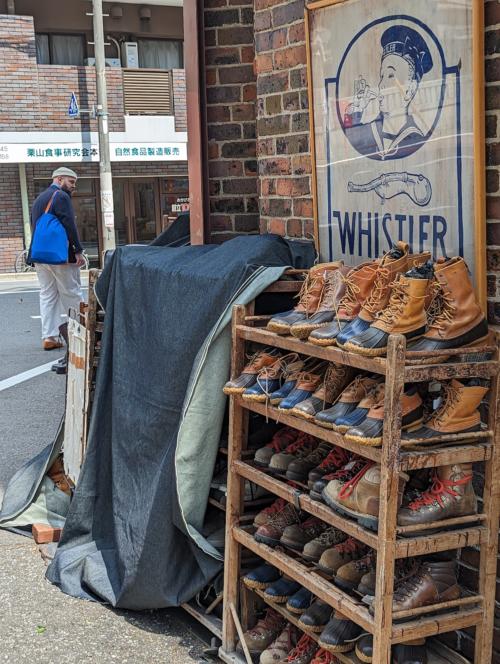
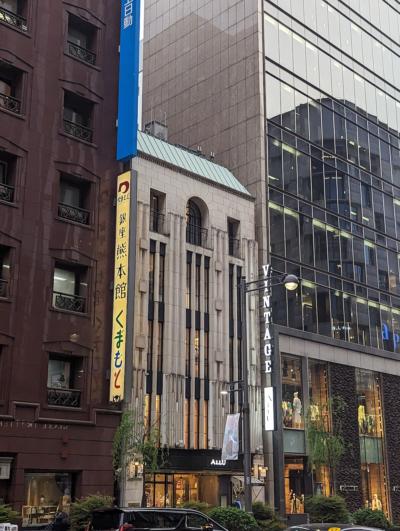
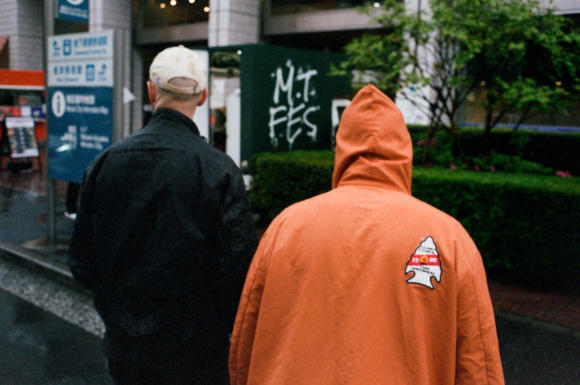
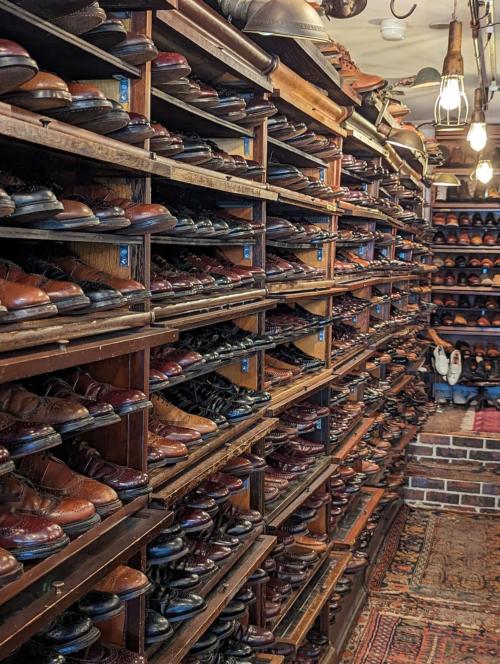
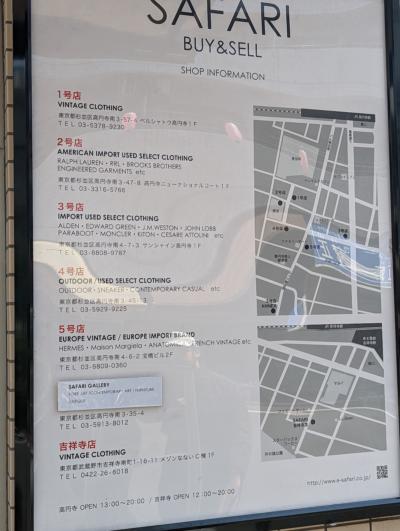
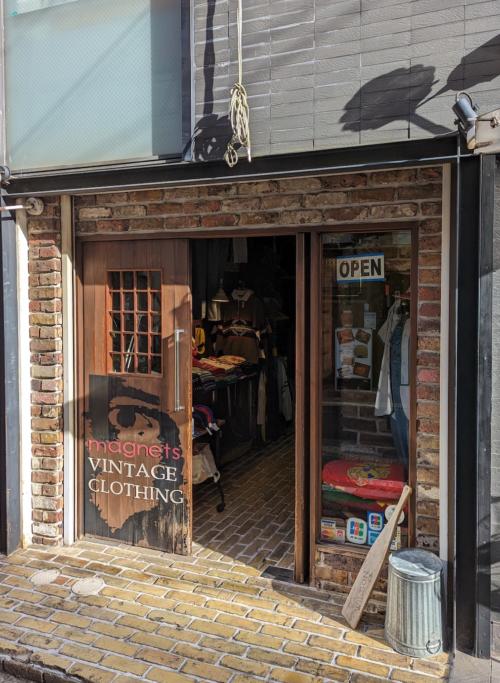
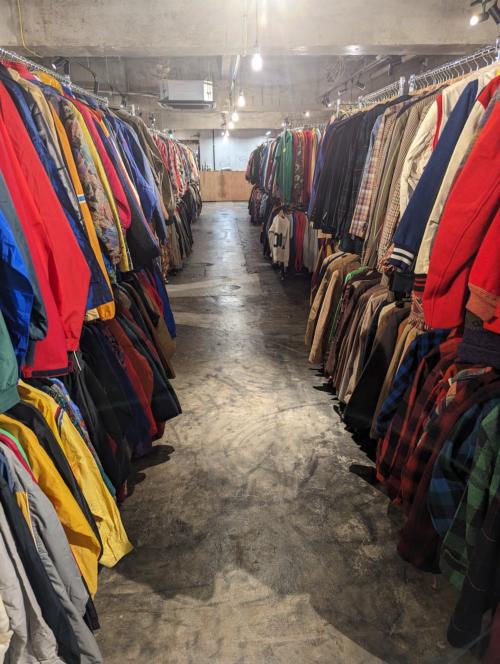
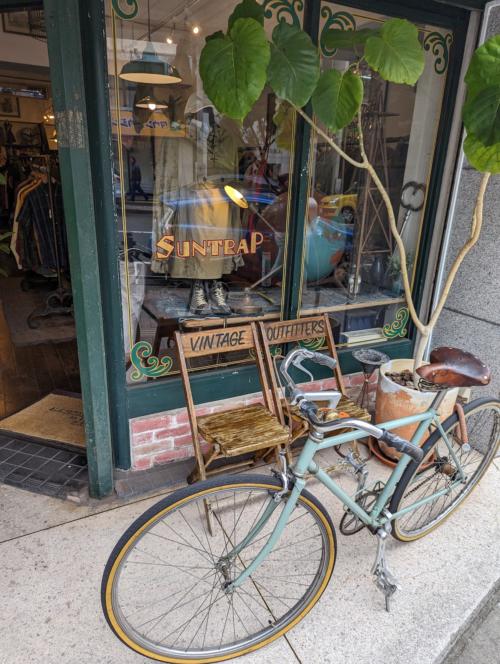


























I’m shaking
Fascinating overview, thank you Simon. My curiosity in 40s chinos is duly piqued. Military issue, high rise, wide legged? Look forward to upcoming coverage!
Yes, and thanks!
Nice article, the selection is amazing. Do you plan on presenting what you purchased and why ?
Thanks. I kind of mentioned that at the end – they’ll certainly appear on PS in time so I’ll talk about them then
Hi simon can i ask whats so special about the 40s chinos that differentiates it from othet eras? I see plenty of 50s 60s chinos sold on etsy but hardly any 40s
Small points of the cut and style mostly. That particular model has a really nice leg line and neat design that has made it really widely copied. I like a turn-up on the length though to give it a bit more taper at the bottom
Variation is an understatement, thanks a million for the introduction and guide if I ever get out their I’m definitely going to be running around.
I’m very curious where the inventory to stock all these stores comes from. Surely it can’t all be sourced from within Japan. Just as an example: I lived in Central America for some time and did quite a bit of thrifting. There the thrift store inventory is mainly sourced from what are known as “pacas”; basically large bales of bulk clothing from the U.S. that are sold by quality classifications (A, B, C, etc.). The clothing in the bales comes from a variety of places, everything from last season fast fashion (lots of new-with-tag Old Navy, Zara, H&M) to abandoned dry cleaning and old shoes left at cobblers (I was luck enough to find many a pair of vintage shell Aldens and Florsheims) to excess stock from charity shops. The stores would buy these bales, open them up and basically throw everything on hangers, so as a customer you needed to sort through a LOT of trash before finding any treasures. It seems as though most of the shops in Japan are much more carefully curated than that. Cheers!
Hey John,
Yes it’s a variety. A huge amount has been imported and collected by the Japanese over the years – particularly in the 70s and 80s when there was very little interest in America in this clothing. David Marx’s book Ametora details some of that.
But also, there are always people working in the US as pickers (and in Europe to an extent) that vintage buyers and shops use to source clothing.
i went to a high end vintage jeans shop in denver, La Lovely, recommended by a reader featured in PS some months ago. they sell jeans for 1k a pop. they told me alot of the best stuff they find gets sold to japanese vintage shops. these guys go to attics, into mines, and everywhere all over the country to find stuff.
While I red this very enjoyable article I wondered what those prices might be. Selling a vintage jeans for one grand seems crazy somehow. May someone provide other prices such as those for sought after military clothing like original flight jackets and co?
Sadly here in Germany there are little to no real curated vintage stores. Most of those are thrift shops, that sell not really enjoyable stuff. I would love to go real vintage hunting one time tho, especially in Japan. Seems like it‘s one of the best places to do so!
They vary hugely Amon – when the prices get that high, it’s essentially because of rarity and collectability.
So for example a type 2 Levi’s jacket would be very expensive, but a Lee Rider or Wrangler but actually be nicer but would be much less expensive – say £300 rather than £2000. Most of the time, as with those jackets, you’re paying less than a well-made modern one, unless it is rare/collectible. So that makes it fairly accessible – even if it’s not at the near-thrift level these clothes were 20 years ago
Thanks Simon. I just saw a Big E Levi’s on a commonly used second hand online platform for just 40 Bucks, I think I’ll pick it up and see where it’s going. Seems like a good deal to me!
As with all type of sought after things, rarity and collectability makes them much more expensive. I should’ve known that from my experiences with other items such as vintage cars and bikes or watches
Best regards from Germany
Thanks Amon. To be honest that seems a little bit suspicious. Either they don’t know what they have, or it might be from a run Levi’s Vintage Clothing did a few years ago where they did some big E ones for a kind of recreation thing
I live in Los Angeles, and you’ll often see pickers at the local thrift stores and flea markets, buying up stock for the Japanese market.
Yeah the Rose Bowl flea market is probably the best known in the states for that
Simon and Camilla: I am surprised that so much has been sourced in-country. Pickers in the U.S. and Europe seemed like a more expected source. Ametora has been on my “to read” list for a while, so thanks for the reminder to pick it up!
Joon and Amon: 1k for jeans seems very high to me unless (as Simon said) they’re extremely rare. I know a fair number of people in the thrifting business, and have a lot of respect for what they do. So I completely understand that when we buy from a higher end vintage store (or a respected online seller), we’re not only paying for the item itself. There’s also the fact that they’ve done much of the heavy lifting for us: sorting through the endless racks of clothing to find the right pieces consumes way more time than some may think. Then there are the intangibles, like the shopkeepers’ taste, sense of style, experience and eye. I believe Simon covered some of that in his articles on Crowley and Bionic Seven.
But I think prices are also going up because there are considerably more people out there today that (thanks to the internet) are better informed about what’s “good”. Basically, we buyers have more competition amongst ourselves. And there’s a finite supply of really great vintage. Cheers and apologies for the long comment!
No worries John, and your last comment is very valid. As vintage has become more popular, there is less around, and of course a lot of the pieces that people talk about from 20 years ago are now pretty old – clothes get older as the decades progress.
On sourcing in-country, yes the Japanese have been consuming this stuff and collecting it for decades, so there’s a lot domestically that is being resold, sold on etc. Places like Berbejin and Acorn have a lot of pieces on consignment from private sellers
Amazing! From the pictures, the thing that struck me the most, was the sheer volume of clothing and this is the good stuff. Never mind the rest!
You mentioned the vintage is better than London (which is an understatement!), so my question is where are the vintage shops in London? The Vintage showroom is closed (although they did once kindly let me have a look in their storage site), with others you have mentioned over time either closed or now only online.
A feature on London vintage would be great if it’s worth doing or perhaps simply a few suggestions in the comments here please. Thanks.
To be honest Stephen it’s barely worth doing – there’s so little. There’s Levisons, and Worne do pop-ups, Rag Parade is great but in Sheffield. There are two or three more modern ones in the east end around Brick Lane that are OK, but only just. Then there’s the Vintage Fayre that Tony Sylvester helped organise – that had its first day recently, and might be a twice yearly event.
I’m sure part of the reason is London has got too expensive for a lot of these places
Thanks Simon, I thought that might have been the case. Surprised that rents aren’t a barrier in Japan. I was unaware of the Vintage Fayre. Could you let me know where it is advertised going forward. Thanks
Sure, will do. I think they’re planning another one for the Autumn.
As for rents, in places like Paris and Tokyo (and New York to an extent) more buildings are owned by individuals, or small landlords. Unlike London which is dominated by big estates. That and local government policies help create a lot more independent retail. Of course, somewhere like Koenji outside the centre of Tokyo is also a lot cheaper. Be nice to have somewhere like that outside London – we just get Bicester!
Great timing! Im heading to Japan this autumn, and wanted to browse some cool vintage shops, thanks Simon for the great work you do.
No worries. Full Tokyo shopping guide (50+ shops) coming in a couple of weeks too
you are driving us to bankruptcy simon. i will be in tokyo soon and i am growing increasingly afraid of what i might do there.
Wow! no kidding, Im excited 🙂
Shook
I remember going to some of those same Harajuku in 2017 – also at Ethan’s recommendation.
Thank you Simon. I’ll be going to Japan sometime in the Fall and was wondering if it is easy to find these shops through google maps. Is there a way you can give us the addresses of all these shops? I’ve been to Japan before, and I remember that a lot of the businesses there are difficult to locate. Thank you.
I found it worked ok to put the English names into Google Maps. For some reason the map then shows most location names in Japanese, but the location of the shop and the directions work fine
Great. Thank you!
RJ piece in the workings by chance?
No, sorry. There’s very little access here in the UK
Good post Simon, this is why we need you in the field as a journalist more often!
Cheers Tom
Hi simon are you aware if bryceland has any intention to restock their usn chambray shirt? They mentioned before that their teardrop chambray will replace the usn one but they are completely different design though
I don’t I’m afraid Shem, I won’t know anything more than them
Hi Simon,
Your trip looks fascinating. I’m aiming to be in Japan later in the year, and I will try to allow myself a little time to peruse the shops.
Would you be able to recommend any stores for vintage leather jackets (would you know roughly what I should expect to pay?) and also, whether vintage or new, a kimono for casual attire.
I’ve always wanted to have an authentic Japanese kimono style jacket but I find I need one with a solid collar/broad lapel as the hari style doesn’t complement my neckline (which is also why I’m a fan of shawl collar cardigans).
You display a kendogi here (https://www.permanentstyle.com/2019/08/holiday-snaps-2019-or-no-shorts-in-the-city.html) so perhaps something similar if you think that would suit.
Regards,
Tom
Hi Tom,
Leather jackets are pretty much in every shop, though I’m afraid I didn’t look myself so I can’t give any more precise guidance. I do find them a hard thing in general though – so often they look too old or a little cheap.
On kimono I can help, as we went to Chicago in Harajuku, which has a big range and not expensive. More on that in the full updated shopping guide soon.
Hi Simon,
Ok no problem, thanks for the info. My theory is to pick up something classic and then ideally have it altered to fit me better but perhaps I’m better waiting to be able to commission a bespoke Cromford one.
Excellent, I look forward to reading it!
Tom
Definitely worth looking, I just wouldn’t hold out hope – I think after you’ve tried two or three places you’ll get a sense of what most of the vintage ones are like
Shopping for vintage in Japan is so good, it’s quite overwhelming. Thanks for the list Simon.
Pleasure Jack
What’s the size range like?
Looking forward to your Tokyo shopping guide!
On vintage in general? It’s pretty good, but skews towards different sizes depending on the age of the garments. So the old vintage is often small, just because people were small. The nineties stuff is all pretty big.
Thanks – that’ll be up in a couple of weeks
Thank you! I’m new to vintage, hadn’t considered vintage overal would skew smaller but of course. I wasn thinking since Japan folks are smaller the vintage that makes its way over would be smaller for that reason. Can’t wait to search and see! 🙂
This is heaven. Why don’t we have just a fraction of it over here? Please keep the vintage content up. That’s what really brought me over to PS.
Thanks, Simon. This is going to prove a great reference point in the future. Japan really does have it all going on.
Appreciate the breakdown and giving us some insight into your hit list, can’t wait to see a few of those pieces, the 40’s chinos in particular sound like a dream.
What a great read as we found this a great interesting read. We have many customers from Japan buying the best of British tweed jackets.
When I was in Tokyo to visit family earlier this year, I poked around a few second-hand/vintage places in and around Harajuku, Aoyama, Ueno and Komagome. My teenage daughter picked up a pair of old jeans, an M-65 fishtail parka (unfortunately missing the clip-in lining) and a 1980s Nike track jacket.
My highlight, in terms of clothing, was finding a pair of new-old-stock Australian Army trousers with a Gurkha belt closure and double pleats from 1962! I have utterly no idea how a new-old-stock pair of Australian Army trousers from 1962 ended up in a vintage store in Aoyama, and where they may have spent the past 60 years!
I was rather surprising by the popularity of Coogi jumpers. I thought they’d disappeared back in the late 1980s/early 1990s, along with the inexplicable popularity of Ken Done paintings, but apparently Coogi is now collectible (thankfully, I don’t think Ken Done paintings have made a similar comeback).
Hi Simon,
Do you know if any of these stores would stock souvenir/”sukajan” jackets?
I’m not looking for an overly ornate jacket – a single colour one with something on the back.
And if not vintage, are you aware of any shops/brands that would have brand new ones?
Cheers
Yes a lot of them do. And a lot of the repro companies do new ones. Look at Clutch Cafe and Real McCoys eg
Excellent, thanks Simon
Hi Simon, thanks again for these guides – this one was also very useful during my visit though I had hoped to find more vintage or pre-owned pieces from Japanese brands, but that was quite rare.
I would add two potential recommendations, depending on the audience.
In Osaka, I found the Kindal chain of stores centrally to be of similar quality to Safari in Koenji / Tokyo and certainly more interesting than the many 2nd Street stores in the same area (~Shinsaibashi). My best vintage finds of the trip were in these stores actually.In Tokyo, I would consider Shimokitazawa to be another vintage specialist neighborhood, with a very high concentration of independent shops. Most are probably targeting a younger or different audience than PS readers but still worth a walk about.
Cheers,
Gustav
Wonderful, thank you Gustav